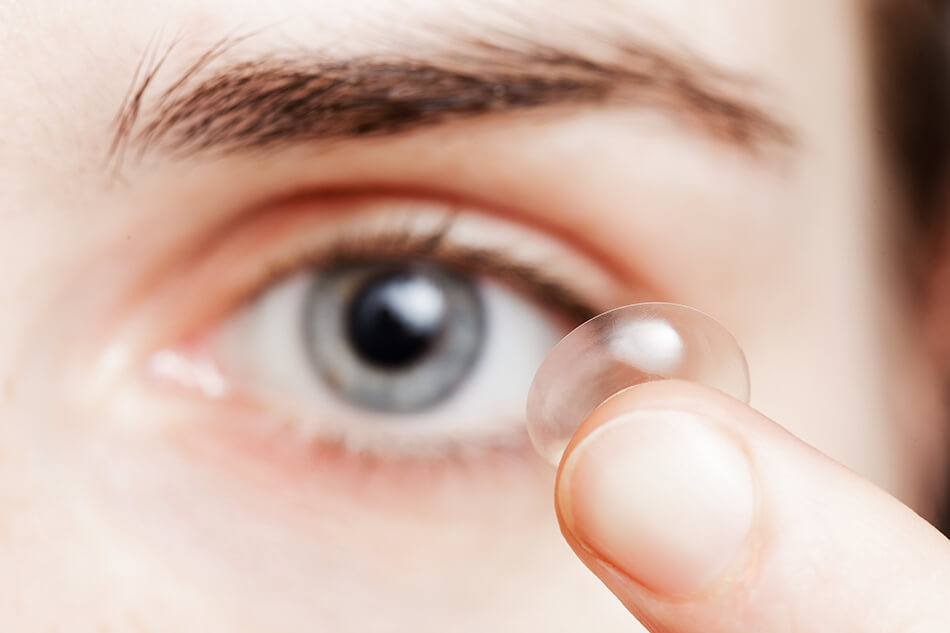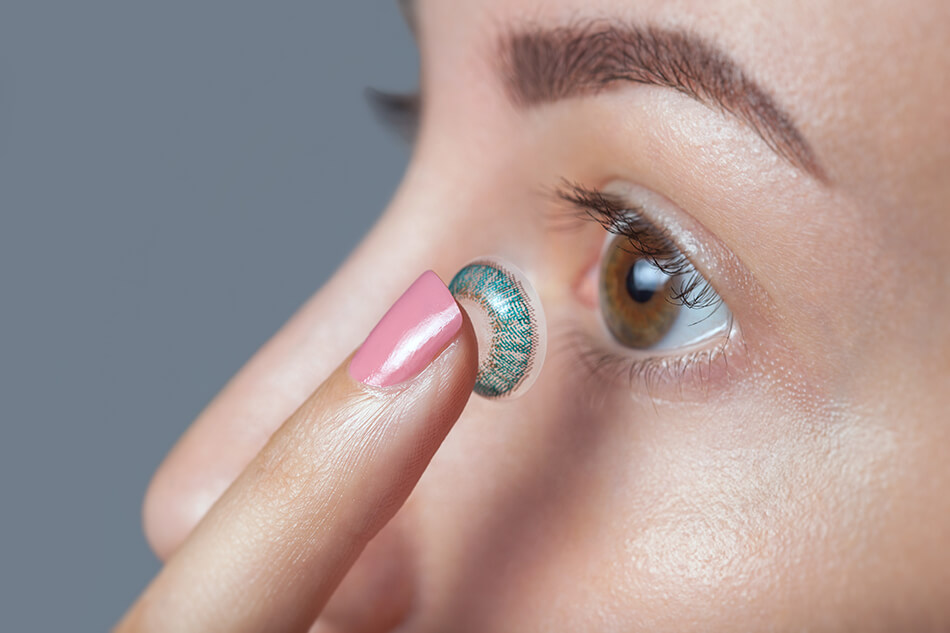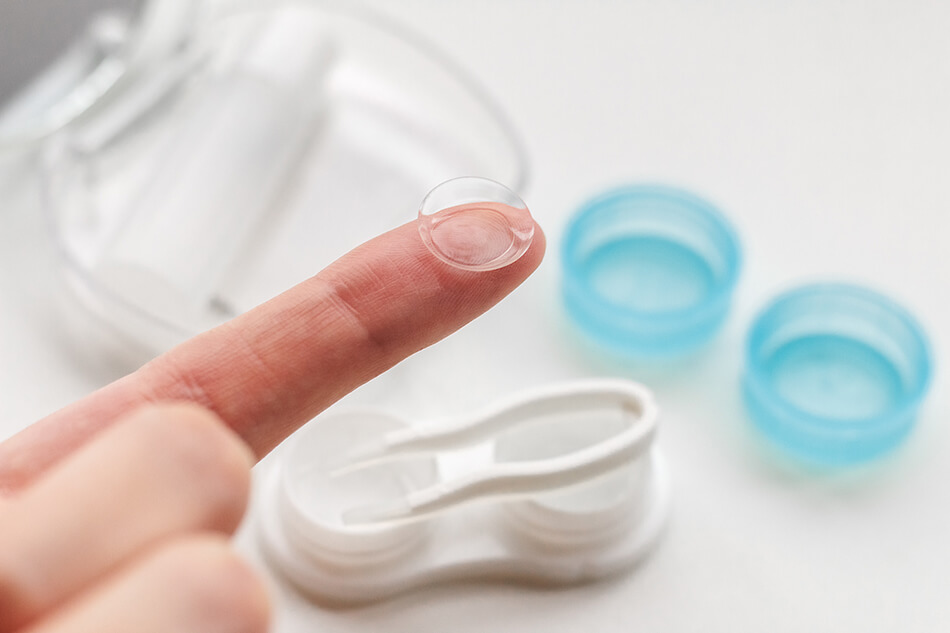First-time Wearing Contact Lenses? You’ll Want to Read This.
Contact lenses are the perfect compromise between prescription eyeglasses and laser eye surgery. However, to ensure a safe and comfortable experience, you’ll need to know some basics.
Here are the most important things to keep in mind when considering contact lenses for the first time.
Eye Contact Lens Basics

Depending on your visual impairment, you'll either need hard, soft, or hybrid contact lenses.
A hard lens is made of a rigid plastic called polymethyl methacrylate (PMMA). Hard contact lenses are ideal for people with astigmatism, but are rarely prescribed due to poor breathability.
If you're considering contacts for the first time, you'll most likely be prescribed soft contact lenses.
Soft contact lenses are made of a thin and porous plastic containing hydrogels. Unlike hard contacts, hydrogels in soft contacts are supple. This allows for superior breathability, making these the most popular lens type. What’s more, they're comfortable to wear without needing to “break them in”.
What about Hybrid contact lenses?
As the name would suggest, these contact lenses are designed to combine the best of both worlds. The hard lens is known for better optics while the soft lens provides all-day comfort. Hybrid contact lenses use a rigid material at the center, surrounded by a ring of hydrogel material. Few people need the features offered by hybrid contact lenses. So if you’re uncertain, book an appointment with an optometrist to know for sure.
Choosing the Right Pair of Contact Lenses
Before buying contacts, you'll need a prescription for contact lenses. This prescription is different than an eyeglass prescription. In the U.S., all contact lens purchases, even cosmetic contact lenses, require a prescription.
Your contact lens prescription will contain the type, design, and even brand of contact lens your eye doctor chose for you.
Here are the contact lens designs and features available if you suffer from:
- Dry eyes: You may be a good candidate for soft lenses made with higher water content hydrogels. These hydrogels help keep your eyes' natural moisture. You'll remain comfortable in your contact lenses much longer.
- Astigmatism: Recent technology has enabled the development of soft multifocal lenses that correct astigmatism, but also adapt to physical changes to your eyes. This is great news. Because, before soft multifocal lenses, people with astigmatism or presbyopia had to switch to rigid GP lenses or give up wearing contact lenses altogether.
- Keratoconus: A thinning of the cornea occurs with Keratoconus. It's difficult for people with irregular corneas to fit into standard contact lenses. Therefore, you may want to look into scleral contact lenses. In these contact lenses, the scleral lens is larger in diameter than a GP lens. It also comes in various sizes to accommodate different cornea shapes and measurements.
- For extended sun exposure, UV-inhibiting contact lenses may be good for you. When worn with UV protection sunglasses, these lenses add an extra layer of protection from the sun. Extended exposure to the sun's ultraviolet rays can speed up eye degeneration. This can lead to cataracts and blindness.
Considering Colored Contact Lenses

If you want to change or enhance your eye color, colored contact lenses may be just what you need.
Important: Like clear contacts, colored contact lenses are considered medical devices. Therefore, you'll still need a prescription from a qualified eye care practitioner, even though these are available with or without vision correction. However, given the advancements in contact lens comfort and wearability, it’s never been easier to get a prescription for coloured contact lenses. So, if you ever wanted to enhance or change the color of your eyes, now’s the time to give colored contacts a try!
Cosmetic contact lenses come in a variety of different colors. Consider both your hair color and your skin tone when deciding on a lens color. Colored contact lenses come in either tinted or opaque variants. Tinted lenses enhance a person's natural eye color, while opaque lenses are used to disguise a person's natural eye color. If you have naturally dark colored eyes, you can use an opaque lens to completely change your eye color. You truly have the freedom to show off your personality with colored contacts, so have fun!
Caring for Your Contact Lenses
You've chosen the right pair of eye contact lenses, now you'll need to take care of them.
Caring for your contact lenses includes practicing good hygiene, cleaning and storing your lenses, and knowing when it's time to dispose of them. This is the best way to avoid discomfort, poor vision, irritations, and infections.

Cleanliness and good hygiene will ensure your contact lenses don't give you any problems. It should go without saying, but always remember to wash your hands before touching your lenses. Contact lenses sit directly on the surface of your eye, so germs could easily get trapped between your eye and the lens.
Your contact lenses will likely need to be cleaned daily with sterile solution. The same goes for the tip of the bottle of contact solution and the contact lens case. Any contamination to your lenses could jeopardize the health of your eyes and vision.
Lastly, be cognizant of how often you’re supposed to dispose and replace your contacts.
The most common types of eye contact lenses on the market are daily and monthly contact lenses. Their replacement schedules are easy to remember. If you're prescribed soft lenses, it's best not to use them past their approved wear time.
Remember: The longer you wear your contact lenses, the greater the risk of infection. So always keep new, unused contact lenses on hand.
Be sure to keep these points in mind when deciding if contact lenses are right for you. What’s most important is that you’re totally comfortable with your decision to try contact lenses. Trying anything for the first time can be scary, so it’s okay if you feel nervous! When you visit your eye doctor, ask as many questions as you need to. They’ll be eager to help in every way possible.
